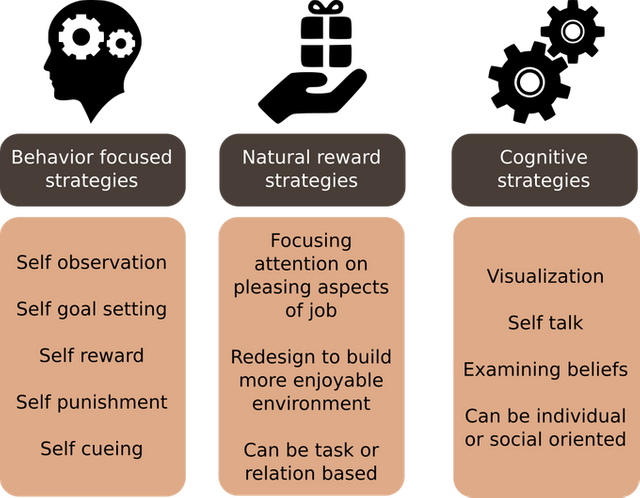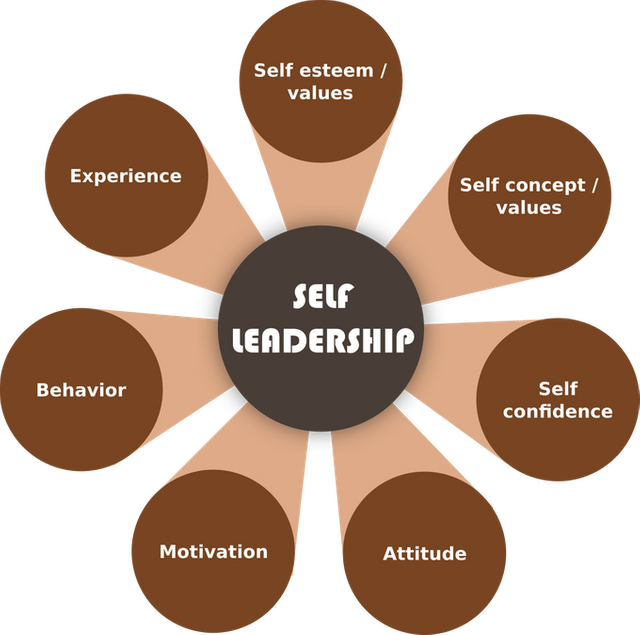Tricking yourself to become a leader
In this post I focus on the concept of self leadership. It is a concept that stipulates that anyone can become a leader, by trying really hard to fool himself into being a leader. That doesn't sound right, does it?

Image courtesy of Wikimedia
Let me elaborate on self leadership. It stems from a concept called self management, which is a concept related to the management body of knowledge. Now, we all know that management and leadership are two very different things. Management is the skill and art of having people work for you, while leadership is the art and skill of having people follow you towards a common goal or vision. In writing, the difference is subtle, but in the real world, they are quite different. Self management is the concept of forcing and coaxing a true manager out of one's self. Self leadership is the equivalent concept for leaders.
Before you start thinking that I am pitching a snake oil sale here, let's first look at the theories of leadership and discuss whether self leadership concept that doesn't violate these established theories. According to the traits theory, everything about self leadership is hocus-pocus and you all can call this article a bluff and call it a day. But behavioral and contingency theory of leadership completely supports the idea of self developed leadership. But if you are big on the idea that the Big Five is the only thing that determines the leadership, then the rest of the article will probably have you shaking your head in disagreement.
Self-leadership is a theory developed and popularized in the late 1980’s as an offshoot of another popular theory being developed at the same time, called self-management. The theory was proposed by Charles C. Manz in 1986 and is defined as ‘a comprehensive self-influence perspective that concerns leading oneself toward performance of naturally motivating tasks as well as managing oneself to do work that must be done but is not naturally motivating’. The theory was an offshoot of the self-management theory, a self-regulatory concept. Self-leadership theory is also similar to self-regulatory theory (self-efficacy). However self-leadership is unique in that it explains the type of behavior individual should have and why. The theory has been studied for more than 30 years now.
Many models have been developed to explore and seek attainment of self-leadership in organisation. The comprehensive model presented in this post explains the importance of self-influencers which is referred to as ‘super ordinate mediators’. It also identifies the desire to achieve self-leadership as having a great influence in the probability of success in a being a true self leader.
Stanley’s model also explores the concept of a comfort zone of an individual, and also stipulates that a self-leader must be willing to work outside this zone. This activity is a precursor to changing one’s self esteem and self-concept to achieve self-leadership. Once this event occurs, self-confidence increases over time, with success of the new challenges the individual now faces. Over time positive attitude changes takes place. The next level in the model, motivation is of utmost importance as this where individuals truly starts displaying self-leadership and is also the distinctive feature of self-leadership that sets it aside from self-management theory. An individual at this level is fulfilling his own needs by exercising self-efficacy, by setting goals that require change in behavior. At this behaviour and experience stage of the model, individuals are able to identify themselves as able to lead others or has reached a leadership aspiration level. This concept of the model has been further expanded into the study of ‘SuperLeadership’, another theory that emerged from the theory of self-leadership . An individual who reaches this level of the model proactively seeks experiences that will result in positive changes to self-esteem and self-concept. The model is a continuous cycle and represents the raising standards of the individual in terms of overall leadership.

Figure 2: Self leadership strategies
Self-leadership is relevant is in participative goal setting or PGS. Involving or training individuals with aspects of self-leadership has proven to have good outcomes on their goal setting standards and performance. As can be seen, this strategy is in line with Cognitive or Thought pattern based strategy of self-leadership theory. There is also empirical researches that prove that self-leadership leads to a positive outcome in the critical thinking process, which is the leading factor that plays a role in successful goal setting in these individuals.
In addition to the goal settings advantages it has, self-leadership has also been proven to positively affect the commitment of individual towards strategic goals. Another aspect that self-leadership has an effect on is motivation, without external factors playing a role. This motivation arises from the individual having a meaningful experience and fulfilling a higher order needs in a job. However it should be noted that some researchers have commented on the paradoxical nature of how self-leadership can be influenced by an external leader. Self-leadership is often theorized as an individual exercise without external influence.
Self-leadership creates a lot of room for innovation, if the organisation engages in creative leadership. This innovation is a direct result of the acquired ability to work outside the comfort zone of an individual. This form of self-leadership focuses on constructively navigating thoughts and intentions towards creation of desirable changes, improvements and innovation.
Self-leadership has been seen to effect work role performance of teams. This comes about from the overall improvement in motivation of the team as a whole, applying innovative ideas and ability to work with the right attitude and behavior in the work environment. The outcome from this change is members achieve a higher performance appraisal, when they are assessed.
It is also worthwhile to note that there is much research done on how self-leadership theory and its strategies varies across the Eastern and Western culture. As per these researches, it is seen that the application of strategies varies from culture to culture.
Link with personality traits
One of the first aspect of self-leadership that was perceived during research for this post is that it is more aligned with behavioral theory and contingency theory of leadership. It is in stark contradiction with traits theory and maintains that leadership is something that can be taught or attained intrinsically by an individual and the environment plays an important role in the degree of success in these leaders.
However, despite all the optimistic suggestion of how leadership can be achieved by an individual intrinsically, there is also leading evidence that the personality trait, conscientiousness, plays a major role on the level of success of self-leadership in an individual. Further researches also suggest that self-leadership is related to other personality traits such as Extraversion, Openness to Experience. These linkages between personality traits and self-leadership is more in line with traits theory of leadership.
Advantages and disadvantages of self leadership
| Advantages | Disadvantages |
|---|---|
| Theorizesthat leadership can be taught | Measurement of self-leadership in teams has not been fully developed |
| Continuous process, in line with continuous process improvement of quality management | Strategies of self-leadership varies across culture, proven by empirical research |
| Adaptability costs in an organisation are low, with most organisations using training programs and workshops to train employees | While based on self-regulatory aspects, it is paradoxically influenced by external factors |
| Advantageous to the field of Management with sufficient empirical research to support it. |
Self-leadership has been successfully employed in industries such as hotel chains and the military and its effectiveness in sales and services has also been analysed. Given the success and popularity of self-leadership, it is evident that the theory is applied to many managerial positions and being practiced by individuals in managerial positions such as health sector, in sports, engineers, IT sector, education sector and the public service sector. Self-leadership is generally accept as important to the success of organisations in the modern business world.
So what are you waiting for? Start becoming a leader today!
Note: Original text of this post can be found on Rules of Knowledge , to which I contribute to
